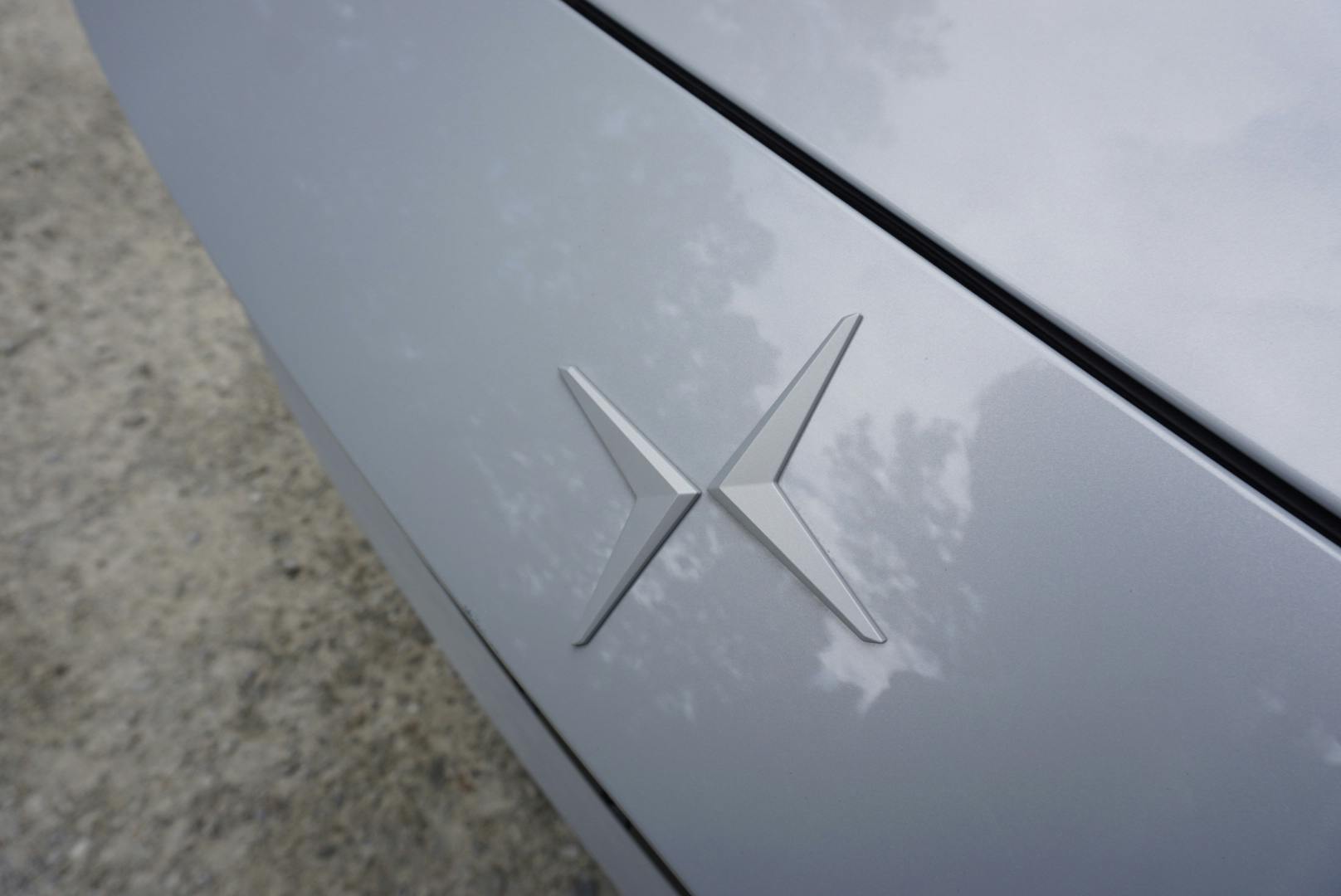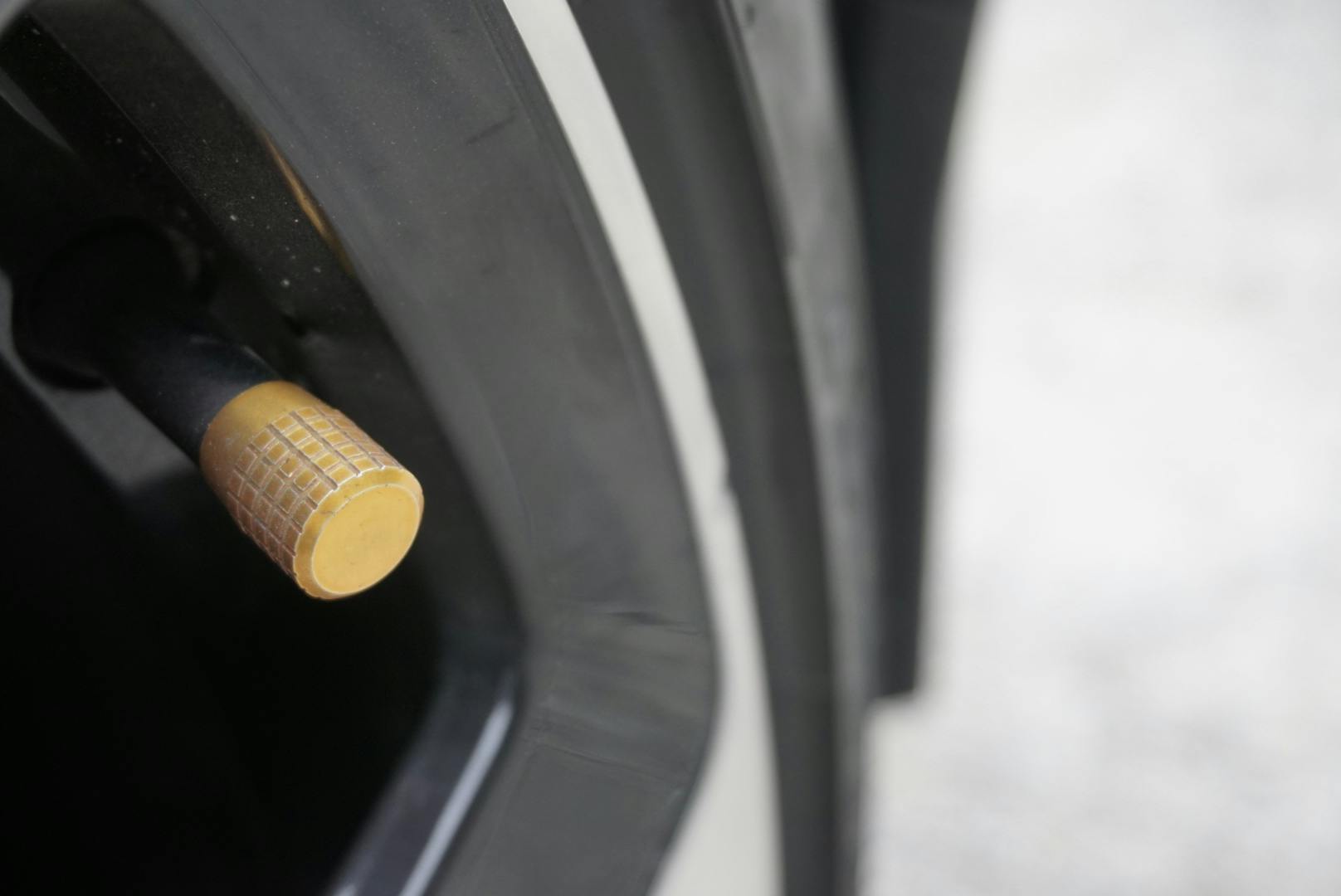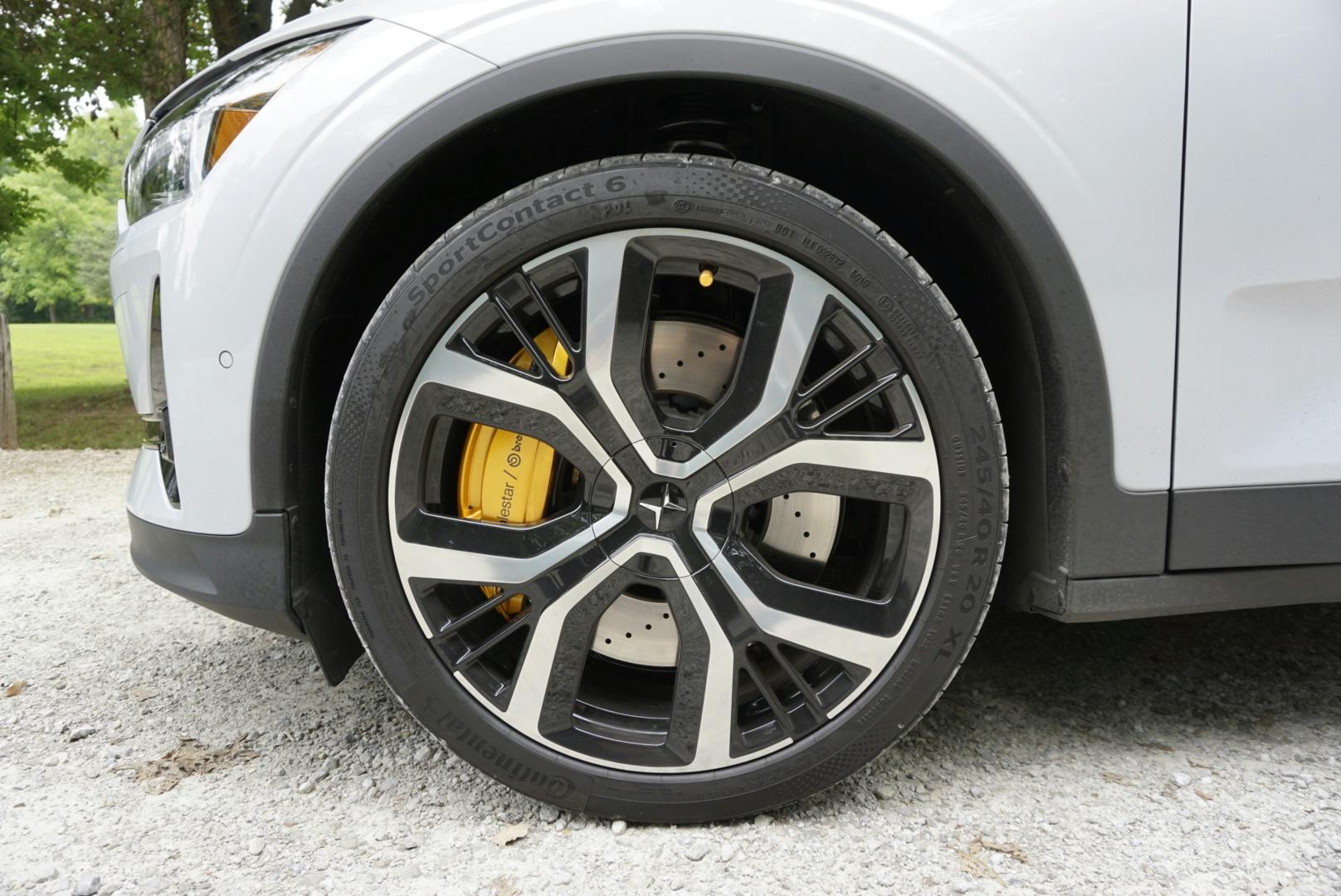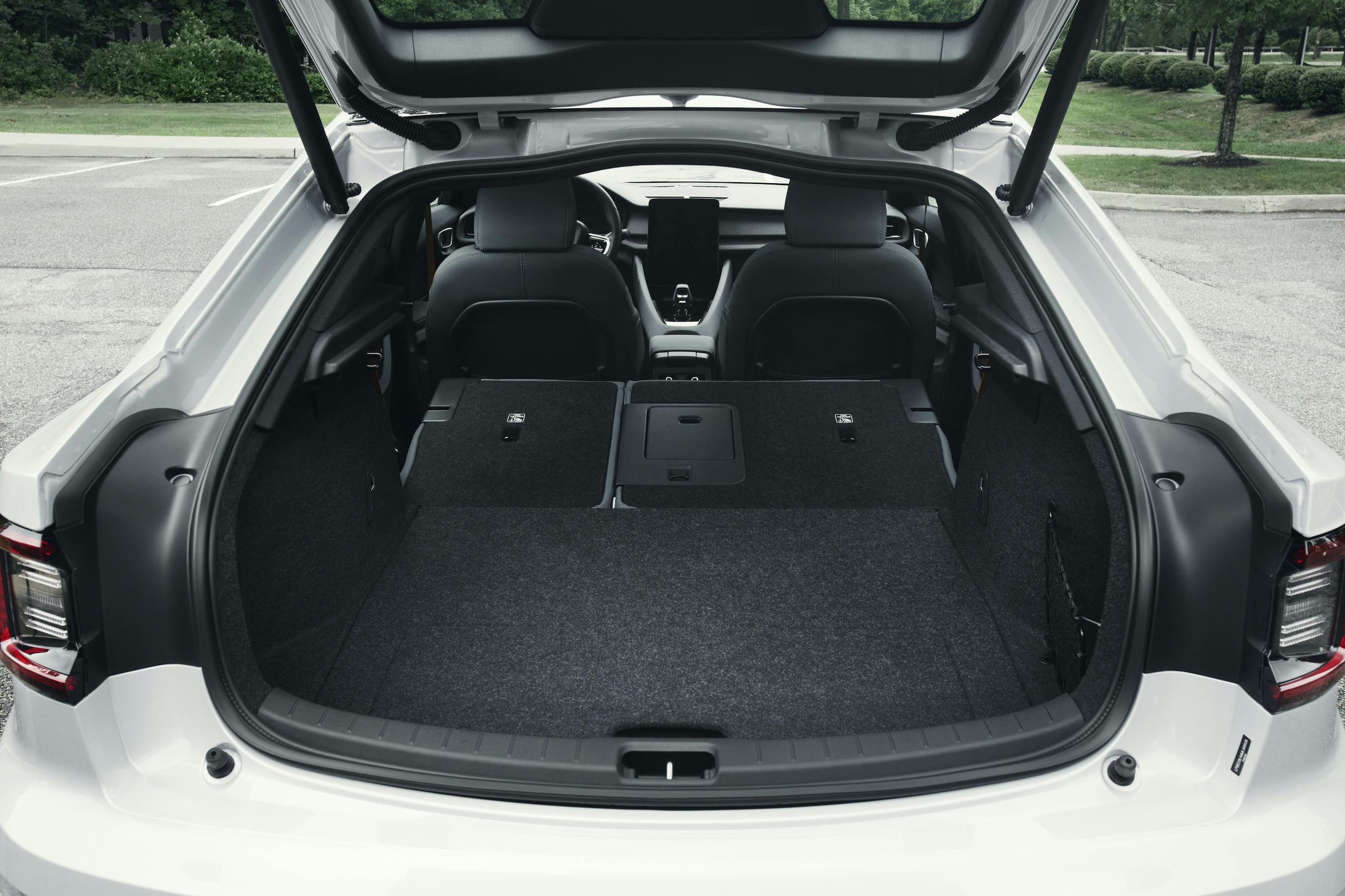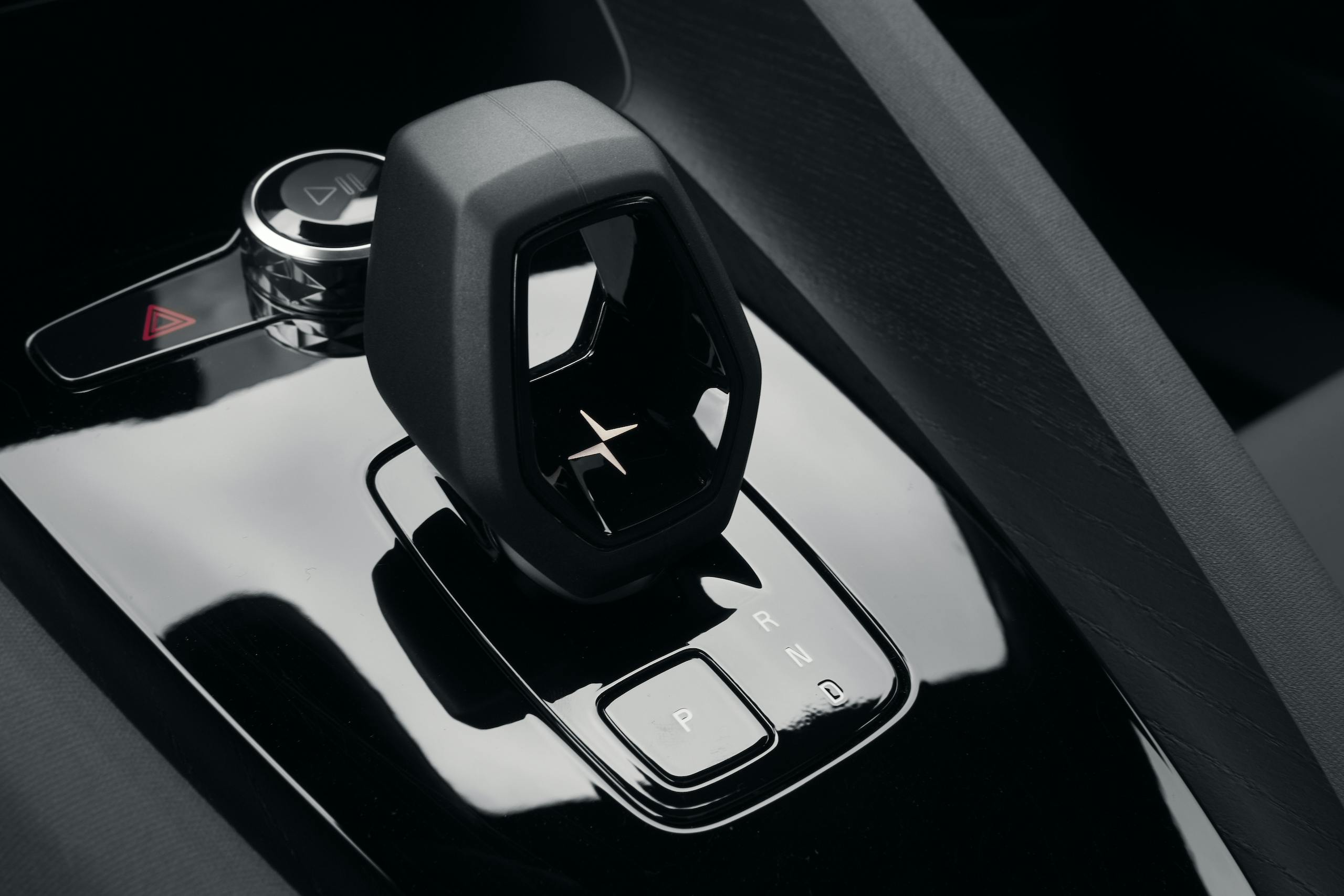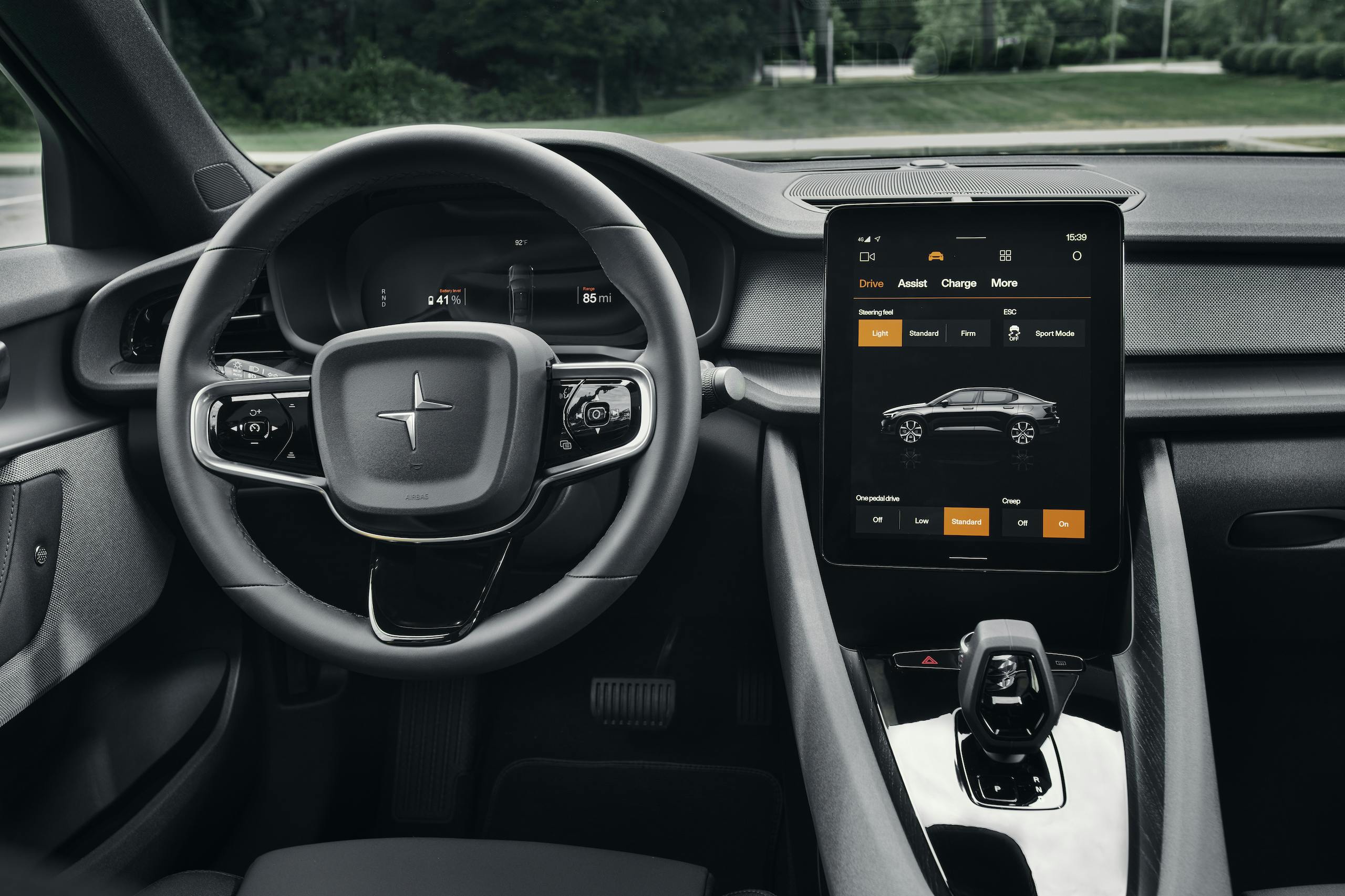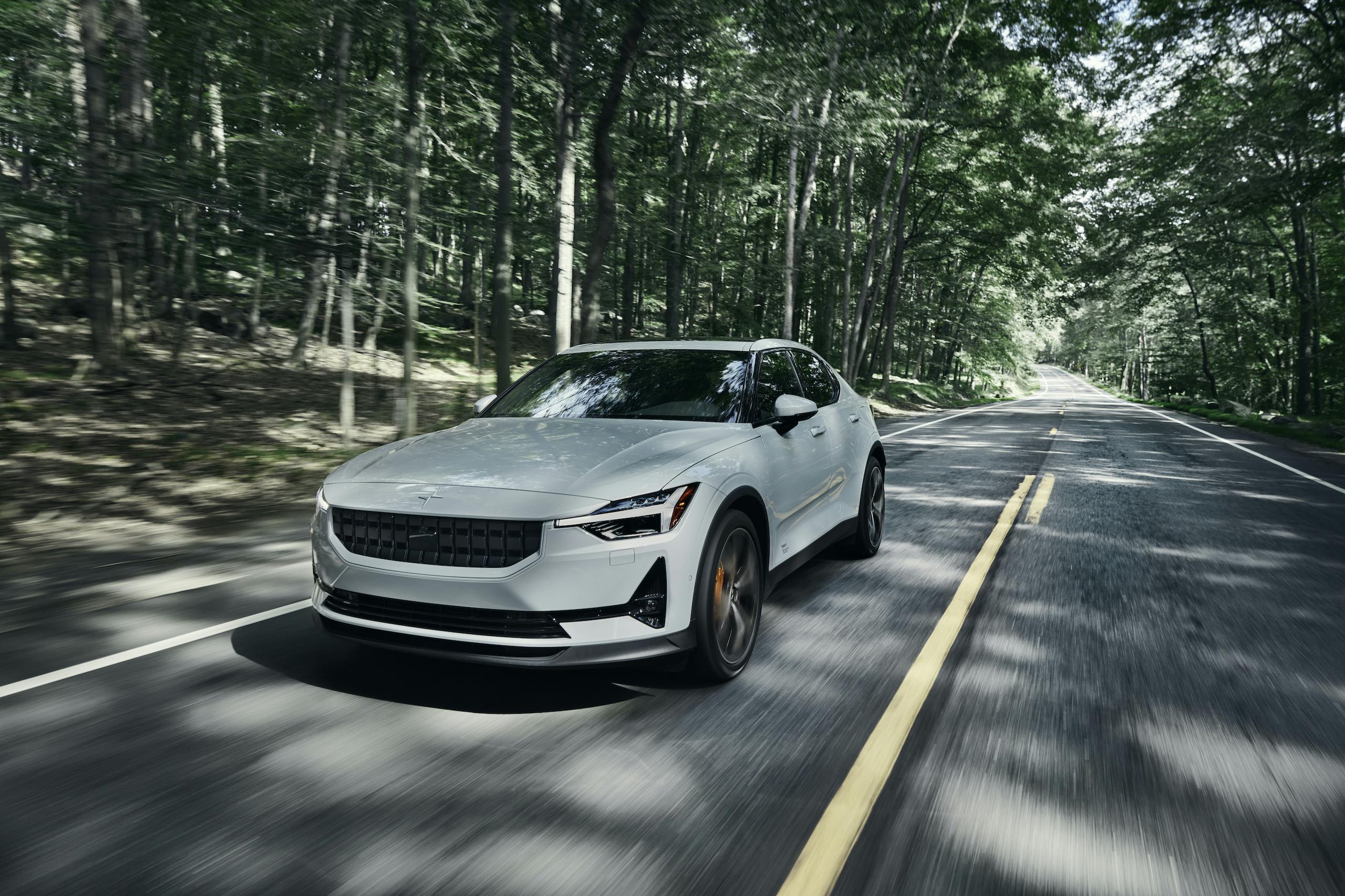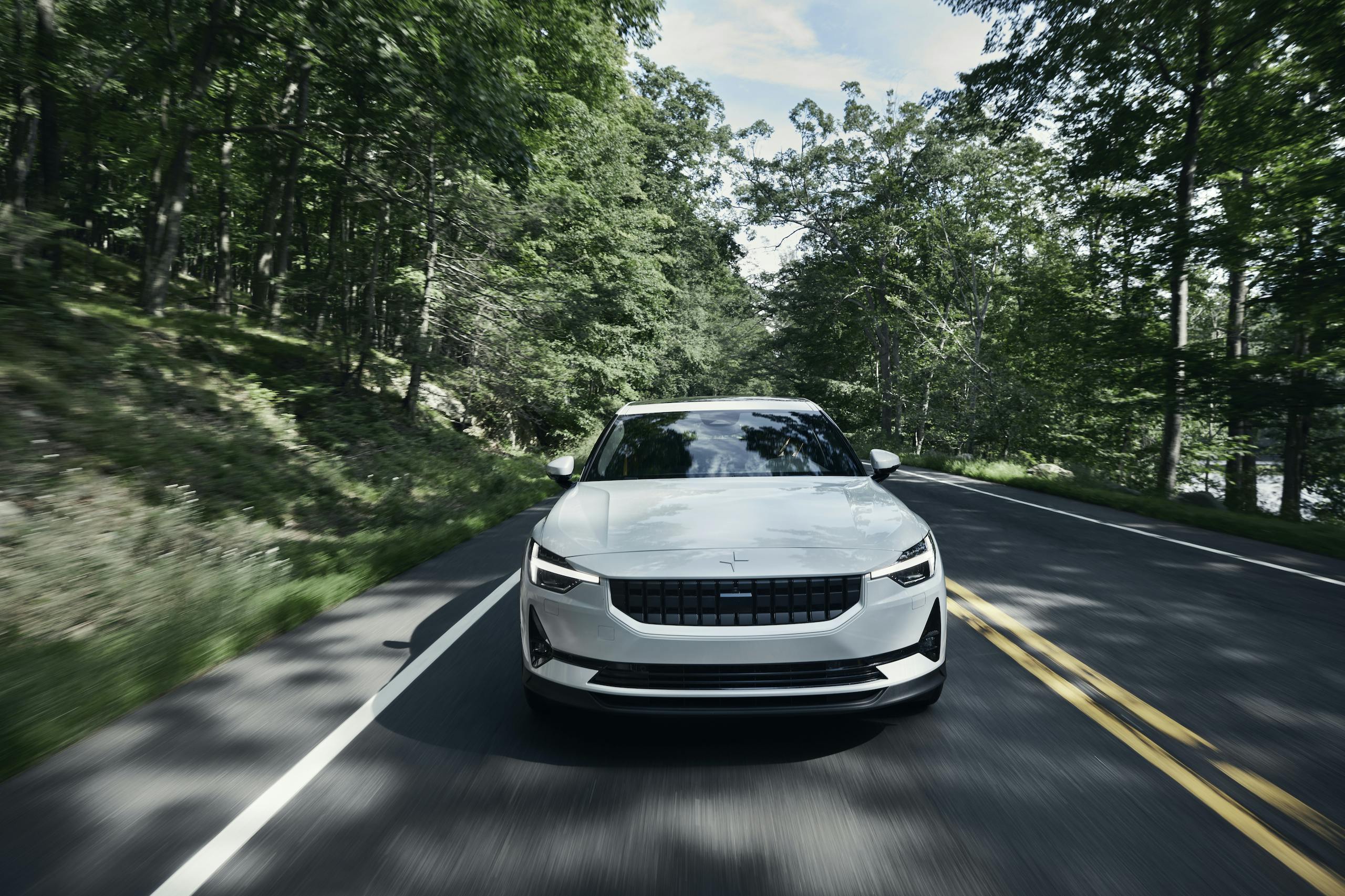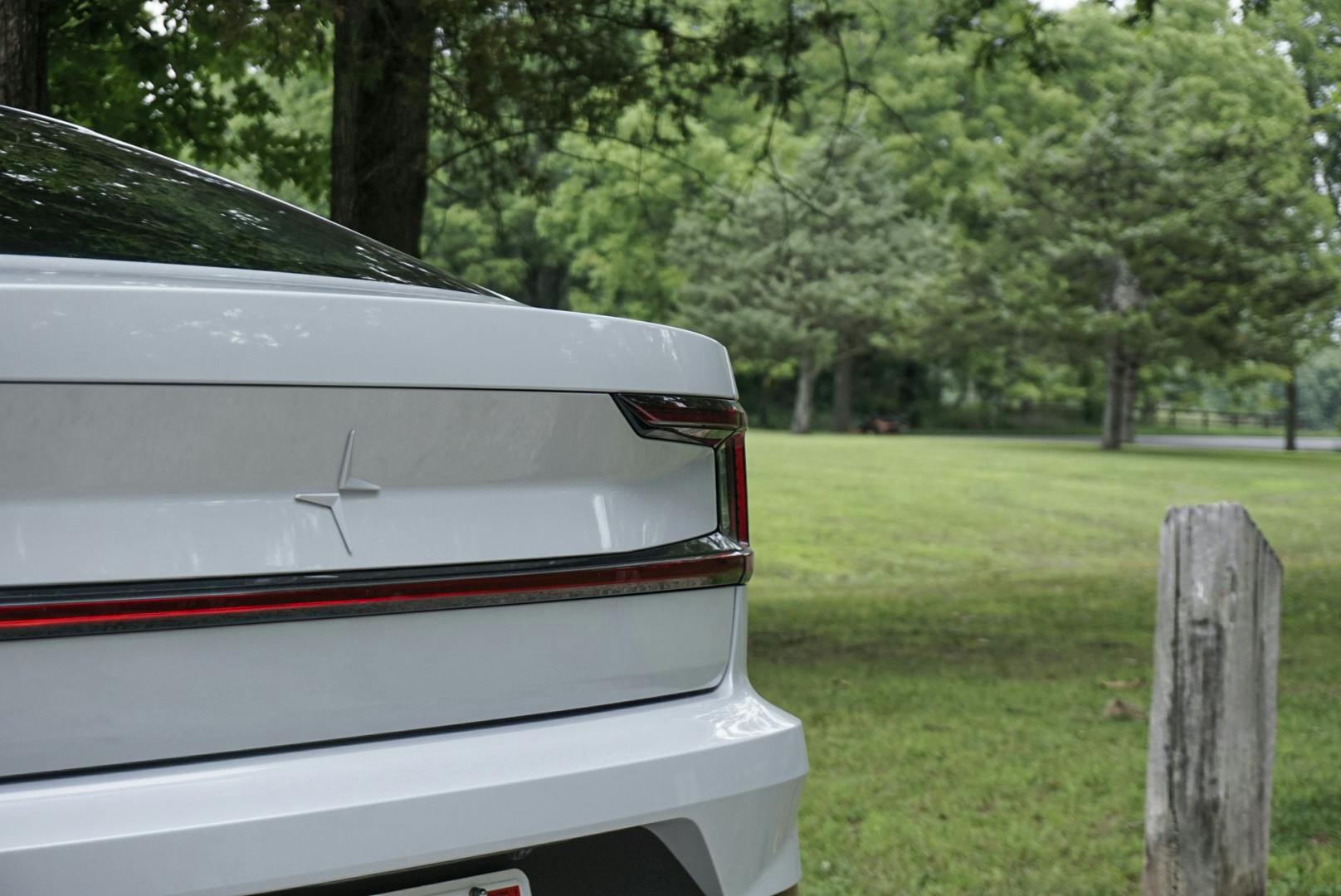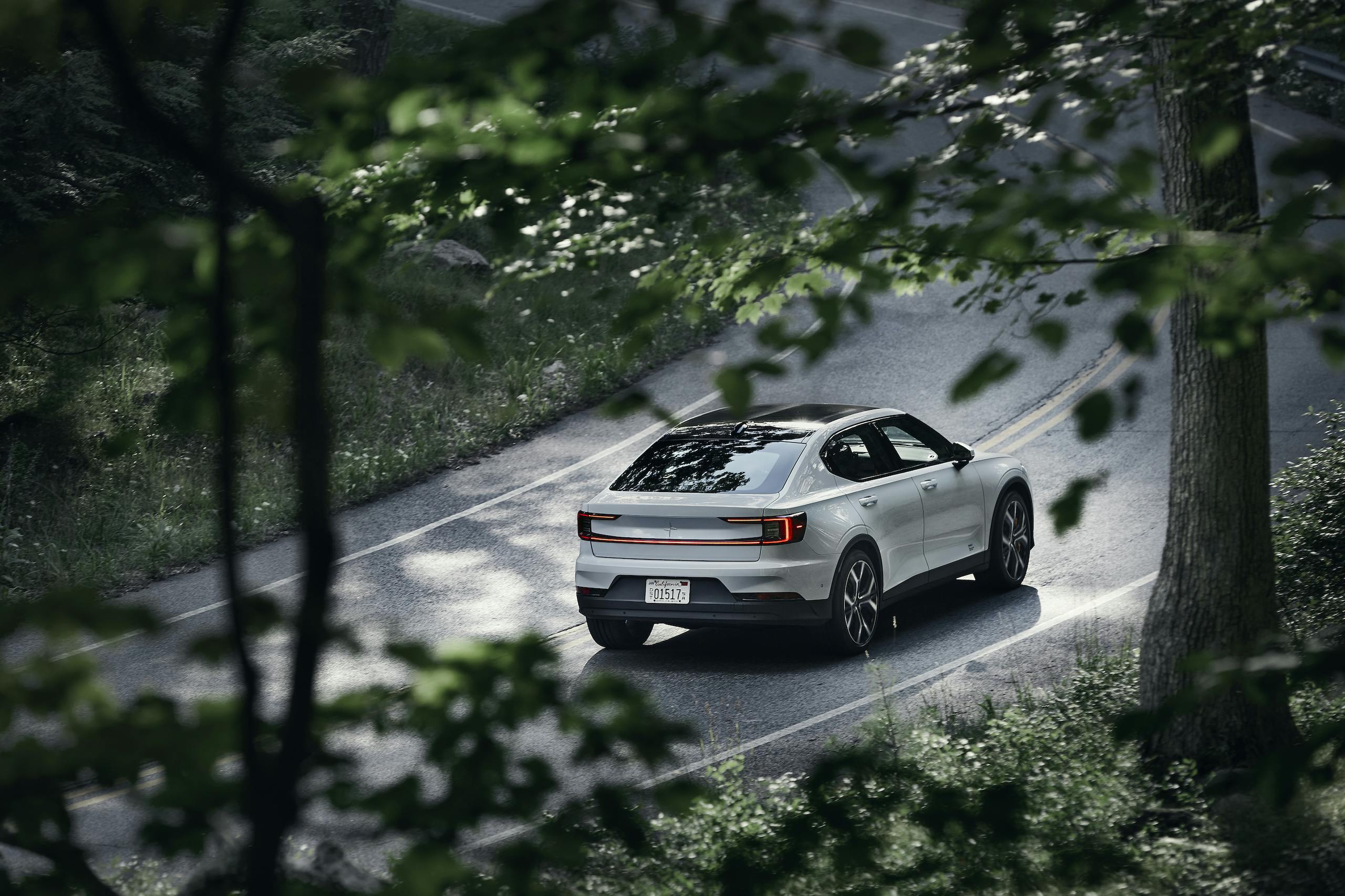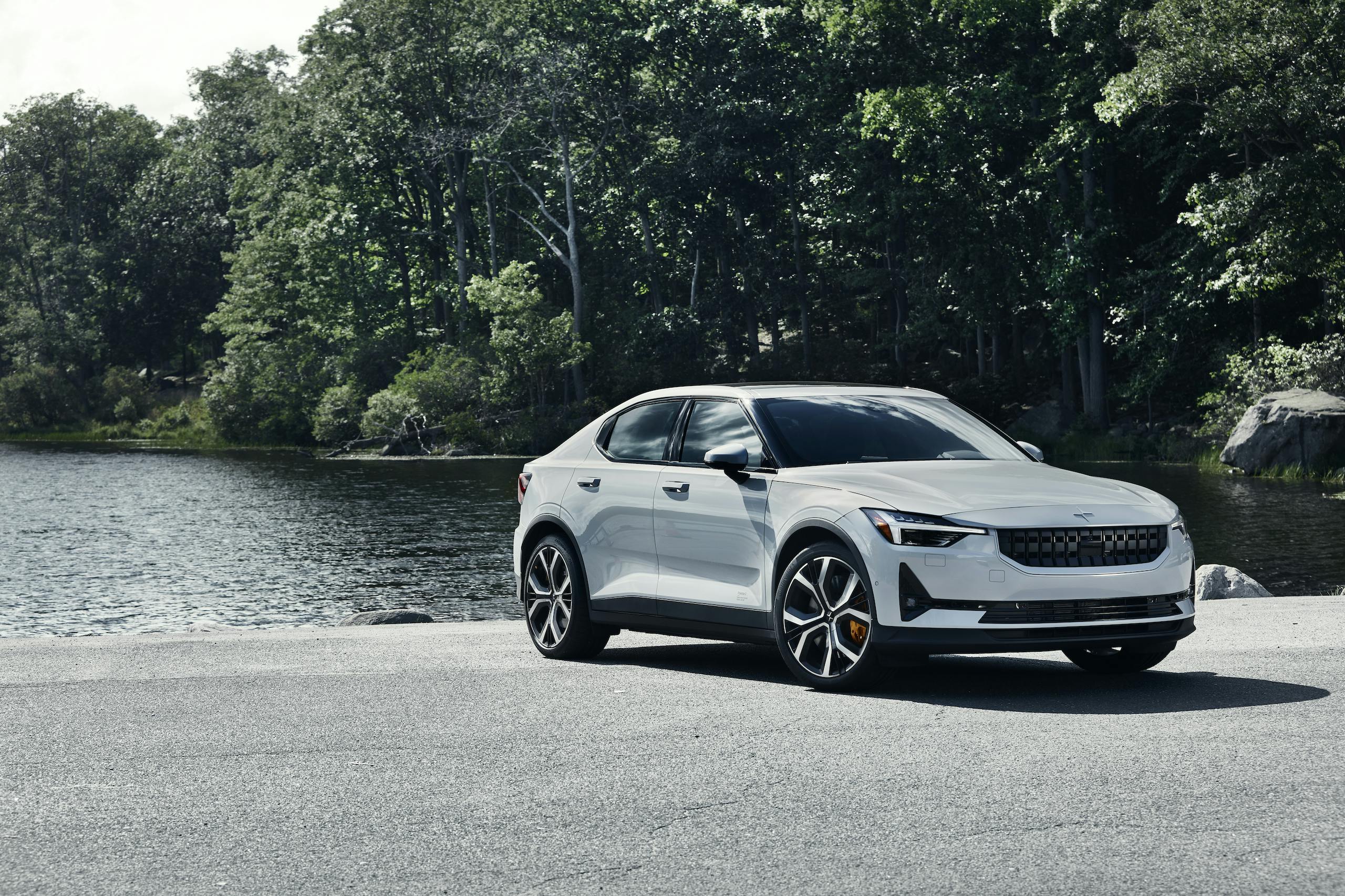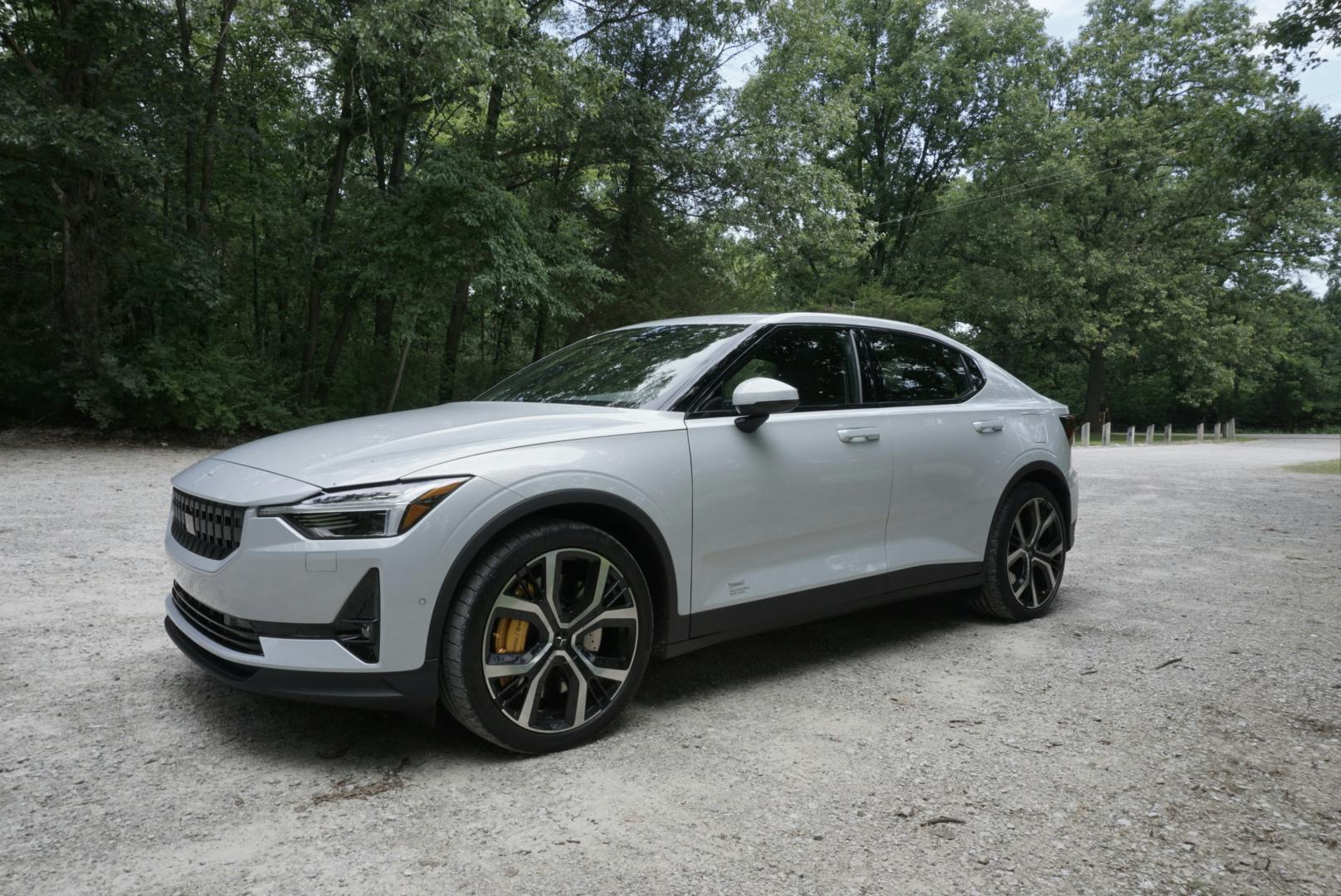Review: 2021 Polestar 2
Like it or not, the decade of electric vehicles is upon us. That might not be so apparent at the moment, when the only truly popular EVs come from Silicon Valley, but make no mistake: Elon Musk’s lithium-ion throne is about to face an onslaught. Globally, 400 new all-electric models will launch by 2025. Outside of Tesla, the limited roster of mainstream electric cars on the market today has the collective desirability of a mid-tier Roomba. Will any other OEMs be able to crack the code?
Polestar might be a current front-runner. Though you might remember this outfit’s debut model—a stunning, $155,000 plug-in hybrid coupe with the creative moniker of Polestar 1—that carbon-bodied grand tourer was essentially a Volvo concept car come to life. A showpiece meant to drum up excitement. Arriving now in Apple Store-ish “Spaces” (read: Polestar dealers), the Polestar 2 is a wholly new, unique model unabashedly gunning for Tesla’s Model 3 and Model Y.

Fortunately, Polestar has put a lot more thought into this vehicle’s engineering than it did the car’s highly thought-provoking name. The brand’s ownership is split evenly between Volvo and China’s Geely, and the former’s CMA small-car platform underpins the 2. Although the CMA platform is not a dedicated EV architecture, it was designed from the outset for all-electric and hybrid applications. The Polestar 2 is built in China, on the same line as the Volvo XC40 and the Lynk & Co 01. Unlike most electric cars, Polestar eschews the ubiquitous “skateboard”-style battery layout; the 78-kWh LG Chem battery lives in the center tunnel where a transmission would normally be housed, which Polestar says plays a role in improved rear-seat ergonomics and crash safety.
The $61,000 launch model, which comes fully equipped and offers the bare minimum of options, packs a 204-hp electric motor on each axle for a total output of 408 hp. Twist is the name of the game with EVs, and the Polestar 2 delivers an immediate 487 lb-ft. Equipped with the optional Performance Pack ($5000), the Polestar gets manually adjustable Öhlins dual-flow valve dampers at all four corners, Brembo front brakes, and 20-inch wheels, along with bronze-colored valve stem caps and brake calipers. (Performance Pack models have a slightly reduced range compared to the standard Polestar 2.) Thus far, take rate on the Performance Pack model (such as our test car) has been much higher than Polestar anticipated, but it’s likely that early adopters are driving that demand.

Customers in North America care about range more than anything else when it comes to electric cars. On a full charge the 2 can travel for an maximum of 275 miles (Polestar is shooting for an EPA rating around 250 miles), but that number drops considerably when traveling at highway speeds over long distances. For reference, Tesla claims 322 miles of range for the Model 3 Long-Range, and that car has the advantage of a highly developed network of Supercharger stations across the globe.
Polestar says it conducted a third-party “torture test” to fully ascertain range of the 2 and its main competitors. How far can the Tesla Model 3 Performance, Jaguar I-Pace, Audi e-tron, and Polestar 2 really go before conking out? Driving at 70 mph around a test track, this is what the evaluation revealed: Actual range was 188 miles for the Jag, 187 miles for the Audi, 198 miles for the Polestar 2 with Performance Package, 207 miles for the Polestar 2, and 234 miles for the Tesla. The Polestars were able to maintain 70 mph for an additional 7-10 miles after indicating a range of zero, whereas on the other end of the spectrum, the Audi was unable to even make it to the plug located two miles outside the test oval after reading zero. Charging the Polestar 2 takes up to 8 hours from 0 percent capacity on a Level 2 charger, or as little as 40 minutes from 0 to 80 percent capacity on a DC fast charger.
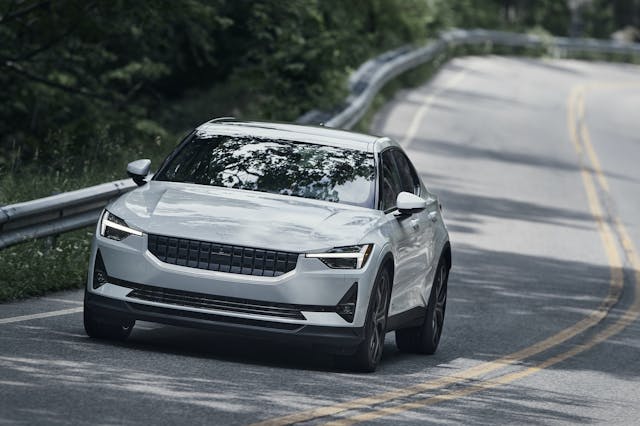
Innocuous, minimalist, and slab-sided though it may look, the Polestar 2 nonetheless presents a fulfilling and at times even thrilling drive. The temptation right out of the gate is to mat the throttle, and surrendering to that impulse unleashes a brusque, satisfying shove forward. Impressive, especially for a tall hatchback lugging around 4680 pounds. Release the accelerator and the Polestar 2 can slow itself to a stop solely with regenerative braking, which is three-way adjustable depending on your preference. The most aggressive mode is an absolute boat anchor, however, and we’d strongly recommend only using it in the city. The standard mode is perfectly tuned, and we expect most drivers will never deviate from this setting. Launches are entertaining, but when you’re not wailing on the accelerator the Polestar 2 has an annoying tendency to hesitate as you ease into the throttle. A more linear response from the accelerator would feel more fluid; a Polestar spokesperson indicated that the throttle is tuned this way for battery efficiency. What really stands out, even in regular city use, is the jarring difference between the car’s gun-shy acceleration and its highly sensitive brakes, which are challenging to modulate and offer no discernible feel through the pedal.
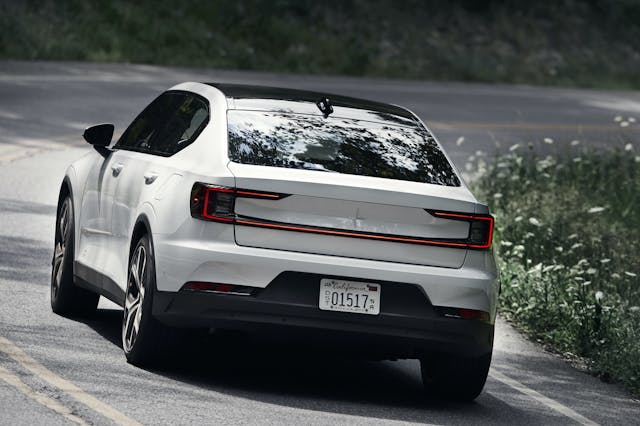
Whether on center or at full lock, the Polestar 2’s steering has a pleasant, natural weight. The body gently leans into corners, but once you find its balance the car is sure-footed and easy to control. There’s no getting around its precipitous heft and preference for understeer, though. The trick is to lift off the throttle just before a corner so the regenerative braking can slow your pace. Then, simply point the steering wheel to your desired exit, ease back onto the accelerator, and let the all-wheel drive system (and brake-actuated torque vectoring) sort out power delivery to each axle. The ride remains remarkably composed even over broken pavement, and although you do feel the occasional heavy bump, impacts are well-damped even on the Performance Pack model’s 20-inch wheels. Although its styling calls to mind the sort of geometric pods you see zooming around autonomously in the background of dystopian sci-fi movies, driving this car is surprisingly engaging. Competent, but not giggle-inducing.

Tech-obsessed owners will be too busy fawning over Google’s slick new in-car operating system to worry about any dynamic shortcomings. Taking to heart a lesson automakers should have learned years ago, Polestar swallowed its pride and shelled out for a comprehensively integrated Android interface that goes way beyond just mirroring your phone. Though you can still use Apple CarPlay or Android Auto, there’s finally a reason not to: Everything from navigation to climate control is intertwined with Google’s virtual assistant. Bark out your most outlandish command, be it the swiftest route to a Popeyes chicken sandwich or the exact year of jazz great Sidney Bechet’s demise, and moments later the answer will arrive. (How the voice control will work with two screaming kids in the rear seat and your spouse talking on the phone in the seat next to you remains to be seen.) Physical controls are fairly limited, but unlike the Model 3, there is still an instrument cluster behind the steering wheel and a stalk for the windshield wipers. What’s brilliant about the touchscreen is that it has precious few menu layers, so you spent almost no time needing to dig through pages. In that respect, despite the giant screen, the Polestar system is refreshingly non-distracting.
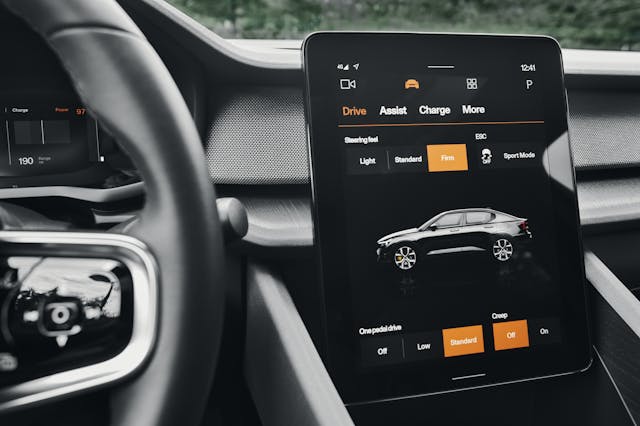
This focus on technology makes sense for an EV of this sort and serves Polestar well in one key respect: the 2 does not feel like a Volvo. Yes, there endures a familiar aura of solidity and cohesiveness to the car’s cabin, and the seats offer glorious support, but here Swedish plushness and warm-tone woods are absent in favor of gray, all-vegan seating surfaces and cool metals. (Leather is available as an option, but Polestar says few customers so far want it.) The sort of people who think the Model 3’s wanton interior nakedness is some kind of luxe minimalism might find it too mainstream, but the Polestar 2’s interior will feel highly futuristic to anyone exiting a BMW 3 Series lease. Where it falls a little flat is the dearth of luxury flair, especially when this car costs $61,000. In a year’s time Polestar will start to roll out base models starting around $45,000, which will be more suited to the level of material appointments offered in the 2. Families will appreciate the vehicle’s generous rear-seat room and sizable trunk. There is a small frunk under the hood, but it’s big enough for the included charging cable, a laptop bag, and nothing more.
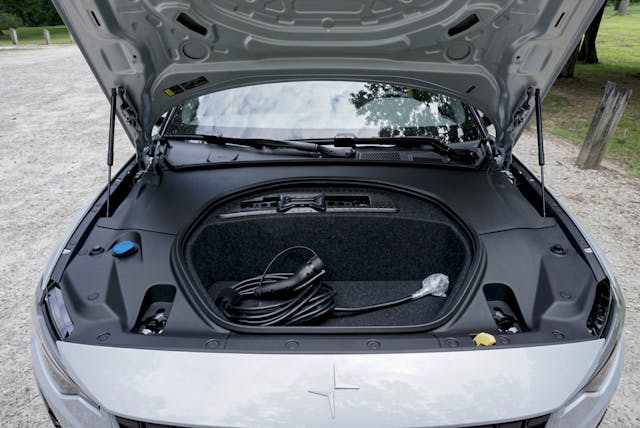
Has Polestar found the EV formula? At the very least, the right ingredients are there, which is a lot to be said for a fresh-faced marque. Polestar plans to follow up the 2 with an all-electric SUV wearing more distinctive styling cues. It’ll be called—wait for it—the Polestar 3. Until then, the 2 should be recognized as one of the best-executed EVs on the market. Polestar won’t lure away any aspiring Tesla disciples with this vehicle, though. Its range is simply too middling and the brand value is, at best, nascent. As the EV market inevitably expands, however, Polestar is showing clear signs it intends to be much more than a niche player.
Highs: Unbelievably simple and clean Google infotainment system, competitive range, spacious and well-designed interior.
Lows: Awkward proportions, could feel more luxurious, overly sensitive brakes.
Summary: Polestar’s first mainstream EV delivers oodles of tech in a well-executed, futuristic-feeling package. If this is the brand’s first effort, great things are surely to come.


